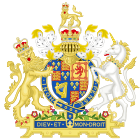The City of London Militia Act 1662 (14 Cha. 2. c. 3) or Militia Act 1662[n 1] is an Act of the Parliament of England which codified the power of [lord-]lieutenants of places in England and Wales to raise the militia. In practice, most lieutenancy areas were counties, but the 1662 act made exemptions for the Constable of the Tower and Lord Warden of the Cinque Ports to act as lieutenants within their jurisdictions (the Tower Hamlets and Confederation of Cinque Ports respectively). Most provisions of the 1662 act were implicitly repealed by subsequent Militia Acts,[5] and the whole act was explicitly repealed by the Statute Law Revision Act 1863 except in relation to the City of London, Tower Hamlets, and Cinque Ports. The Territorial Army and Militia Act 1921 repealed the whole act except for section 1 in relation to the Lord Lieutenant of the City of London and section 26 in relation to levying rates for the City of London Militia. The restricted scope of its remaining provisions was reflected in the official short title City of London Militia Act 1662 assigned in 1948. Section 1 was repealed by the Reserve Forces Act 1980 (c. 9), while as of 2023[update] section 26 as amended remains in force in England and Wales.[6]
| Act of Parliament | |
 | |
| Long title | An Act for ordering the Forces in the several Counties of this Kingdom.[2] |
|---|---|
| Citation | 14 Cha. 2. c. 3
|
| Territorial extent | England and Wales |
| Dates | |
| Royal assent | 19 May 1662 |
| Commencement | 7 January 1662 |
| Other legislation | |
| Amended by | |
Status: Amended | |
| History of passage through Parliament | |
| Text of statute as originally enacted | |
| Text of the City of London Militia Act 1662 as in force today (including any amendments) within the United Kingdom, from legislation.gov.uk. | |
Footnote
editReferences
edit- ^ The citation of this Act by this short title was authorised by section 5 of, and Schedule 2 to, the Statute Law Revision Act 1948. Due to the repeal of those provisions, it is now authorised by section 19(2) of the Interpretation Act 1978.
- ^ These words are printed against this Act in the second column of Schedule 2 to the Statute Law Revision Act 1948, which is headed "Title".
- ^
- Landon, Michael de L. (1970). "The Bristol Artillery Company and the Tory Triumph in Bristol 1679–1684". Proceedings of the American Philosophical Society. 114 (2): 155. ISSN 0003-049X. JSTOR 986032.
- O'Scannlain, Diarmuid F. (December 2019). "Glorious Revolution to American Revolution: The English Origin of the Right to Keep and Bear Arms". Notre Dame Law Review. 95 (1): 401 n.17, 405.
- ^
- "Introduction (i) Militia Acts". Herefordshire Militia Assessments of 1663. Camden Fourth Series. Vol. 10. Royal Historical Society. July 1972. p. 1. doi:10.1017/S0068690500004785.
- Hook, Gordon (October 2003). "The Evolution of New Zealand Military Tribunals: From Prototype to Paradigm". New Zealand Armed Forces Law Review: 36–50.
- ^ Lord Chancellor (12 June 1863). Statute Law Revision Bill. Sessional papers. Vol. HL 1863 vi (133) 1. p. 181.
- ^ "City of London Militia Act 1662". legislation.gov.uk. Retrieved 5 March 2023.
External links
edit- The City of London Militia Act 1662, as amended, from Legislation.gov.uk.
- Raithby, John, ed. (1819). "Charles II, 1662: An Act for ordering the Forces in the several Counties of this Kingdom". Statutes of the Realm: Volume 5, 1628-80. Great Britain Record Commission. pp. 358–364 – via British History Online.